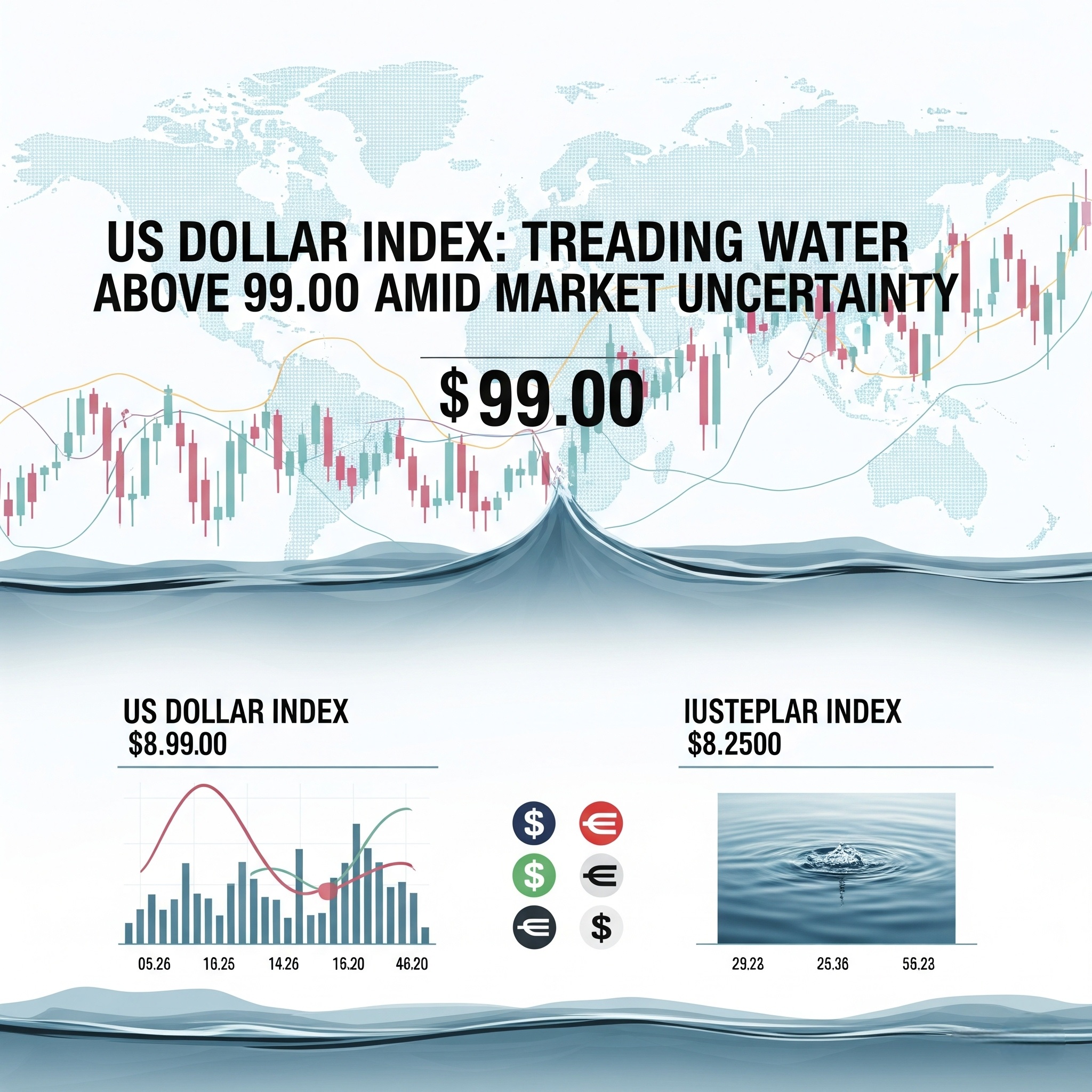The US Dollar Index (DXY) is currently hovering just above the 99.00 level showing signs of hesitation as it faces resistance near the nine day Exponential Moving Average (EMA). This behavior reflects a market filled with uncertainty where investors are cautiously watching global economic developments, interest rate policies and geopolitical tensions.

What is the US Dollar Index (DXY)?
The US Dollar Index (DXY) is a measure of the value of the US dollar against a basket of six major world currencies:
- Euro (EUR) – about 57.6%
- Japanese Yen (JPY)
- British Pound (GBP)
- Canadian Dollar (CAD)
- Swedish Krona (SEK)
- Swiss Franc (CHF)
When the index rises it means the dollar is getting stronger relative to these currencies. When it falls the dollar is weakening.
The DXY is important because the strength of the US dollar affects global trade, commodity prices (especially gold and oil), inflation and foreign investment.
Current Market Conditions: Why the Dollar is Stalling
As of now the DXY is trading slightly above 99.00 but it is struggling to break past its nine day EMA, a short term technical resistance level. This shows that the market doesn’t have a strong direction yet.
Here are the key reasons why the dollar is treading water
1. Uncertainty Over US Federal Reserve’s Rate Path
The biggest factor affecting the dollar right now is speculation around interest rate decisions by the US Federal Reserve (Fed). The Fed has hinted that rate cuts may not happen as quickly as some investors had hoped due to lingering inflationary pressures.
If the Fed keeps interest rates higher for longer it could support a stronger dollar. But mixed economic data has made the outlook murky.
2. Mixed US Economic Data
Recent data from the US economy has been mixed. While the labor market remains strong inflation is proving to be sticky. Meanwhile GDP growth has slowed down and consumer spending is showing signs of fatigue.
This creates confusion in the market as investors try to guess the Fed’s next move.
3. Global Geopolitical Tensions
Tensions from the Russia-Ukraine war China-Taiwan conflict and developments in the Middle East continue to add to global risk. In uncertain times the dollar often acts as a safe haven asset meaning investors move money into the dollar for safety.
However that demand is being balanced out by concerns over US debt levels and the global shift toward de-dollarization in some regions.
Technical Analysis: What the Charts Say
From a technical point of view the DXY is facing resistance at the nine-day EMA. This level is important because it shows where short term momentum is struggling.
- Support level: Around 98.50
- Resistance level: Near 99.50
If the DXY breaks above 99.50 it could move toward the next resistance zone at 100.00. But if it falls below 98.50 a deeper correction could be on the cards.
Technical traders are watching these levels closely using indicators like Relative Strength Index (RSI) and Moving Averages to determine momentum.
Impact on Other Markets
The movement of the DXY affects several other asset classes:
1. Gold and Commodities
A stronger dollar usually leads to lower gold prices because gold is priced in dollars. Right now, gold prices are under pressure which reflects the current strength in the DXY.
2. Emerging Markets
Emerging market currencies like the Indian Rupee, Brazilian Real and South African Rand often weaken when the dollar strengthens. This can hurt these economies by making imports more expensive.
3. Stock Markets
A strong dollar can be negative for US multinational companies as it makes their overseas earnings worth less when converted back to dollars. However a strong dollar is often seen as a sign of global risk aversion which can boost demand for US assets.
What to Watch Going Forward
For investors it’s important to monitor the following factors:
- US Inflation Reports – Any surprise rise in inflation could push the Fed to delay rate cuts, strengthening the dollar.
- Fed Commentary – What Fed officials say in public speeches or during policy meetings will continue to impact the DXY.
- Global Political Developments – Any escalation in global tensions could increase demand for safe-haven assets like the dollar.
- US Debt and Fiscal Policy – Rising debt levels and potential government shutdown risks may start to weigh on the dollar in the long run.
Conclusion
The US Dollar Index (DXY) is currently in a state of pause hovering just above 99.00 and struggling to gain momentum. With the market still unsure about the Fed’s next steps and global uncertainties weighing in traders and investors are being cautious.
In the near term breaking above the nine day EMA will be a key test. If the DXY can build strength above that level we could see another leg up. But a failure to hold above 99.00 might open the door for a pullback.
As always staying updated with economic news, central bank policies and technical levels is crucial for making smart investment decisions.
Disclaimer: This blog post is for informational purposes only and does not constitute financial advice. Please consult with a certified financial advisor before making any investment decisions.
